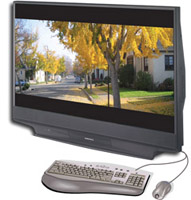IPTV: New Wave Video Hitting Its Stride

By Mary E. Shacklett
Published: April, 2007
Adopted by telecommunications carriers delivering video services to consumers, IPTV (Internet Protocol Television) provides send and receive capabilities for video streams that are encoded as a series of Internal Protocol packets. The video clips that stream through to desktops and notebooks – and to your home television via setbox technology – are IPTV.
The IPTV consumer market is projected to jump more than tenfold in subscribers between now and 2010, according to recent information from Inform Telecoms and Media. This immense market opportunity will come in the form of Triple or Quadruple Play offerings that you will see from your service provider.
For IPTV, the future is now.
SBC/Cingular Wireless and Microsoft have inked an agreement where SBC uses Microsoft’s TV IPTV technology for next generation television services that include broadcast quality video and video on demand.
Verizon Wireless launched IPTV service in March. AT&T Inc.’s Cingular Wireless launched a similar service in 10 city markets. In Milwaukee, AT&T Wisconsin has begun to install U-Verse, its new Internet television product. IPTV is happening here, in the Bay Area. YouTube.com of San Mateo has put IP consumer video on the map with homegrown videos that anyone can make and distribute. Internet users around the world contribute video material, and some of this material is drawing serious commercial interest.
SF Station offers over 500,000 users a selection of local Bay Area dining video content, along with reviews and information on local restaurants and culinary trends. SF Station alone receives over 2.5 million monthly page views.
AccuStream iMedia Research projects that consumers will watch 29 billion streams of video this year, up from 18 billion in 2005. Forrester Research estimates that nearly half of all Internet users, or about 34 million homes, have watched video streamed online. It’s all adding up to a major role for video in home entertainment and Internet culture.
How will this alter the consumer entertainment experience?
Consumers will have virtually limitless choice when it comes to customizing their viewing experiences and even creating their own viewing options; Pricing models for video services will continue to migrate more to pay per view over time; There will be more delivery channel options for video, from large-screen TV to desktops, notebooks and mobile devices;
Consumer preferences will continue to shift to video-based expression. This started with younger generations, and is now making its way into older ones. People like the immediacy of video experience — which isn’t captured as effectively in audio, print, or even in static photos.
Technology and Legal Issues
Like all new technology evolutions, video TV has its technical hurdles and legal challenges. IPTV’s begins with fierce competition in communications and entertainment that places pressures on IPTV providers who feel they must rapidly get IPTV products to market. Many cut corners on quality of service (QoS) to make product launch deadlines. Since consumers are accustomed to the reliability of plain old telephone service (POTS) and cable television, any lack of quality is not well received. Unsurprisingly, mobile video services in particular have been slow to take off due to high prices and poor quality compared with home televisions.
There is a shortage of knowledgeable system and network integrators with extensive IPTV and video experience. Today, IPTV installation in homes can take between three to six hours. Several technology companies are working towards solutions that can be installed in less than one hour for a multi-room IPTV system through the creation of custom drivers and firmware that enable a completely plug-and-play wireless IPTV solution.
The entertainment industry loses billions of dollars in revenue each year through video piracy, and has adopted encryption technology to control access to video-on-demand and pay-per-view events that are delivered via IPTV and other video technologies. This battle will intensify when Triple Play becomes Quadruple Play with the delivery of IPTV-to-mobile devices.
Piracy controls contradict free access concepts such as those popularized on YouTube, but progress is being made. Texas Instruments recently announced that it was working with several mobile operators to provide content and access protection for Mobile TV. Microsoft’s Bill Gates also noted in a recent speech that digital rights management (DRM) needs to be solved before technologies like IPTV can move forward to their full potential. Once the technology issues are resolved and attractive price points and implementation strategies are created for consumers, the IPTV market could expand exponentially.
Mary E. Shacklett is President of Transworld Data, a marketing and technology practice specializing in marketing, public relations and product management for technology companies and organizations. Mary is listed in Who’s Who Worldwide and Who’s Who in the Computer Industry. She may be reached at (360) 956-9536 or TWD_Transworld@msn.com.

